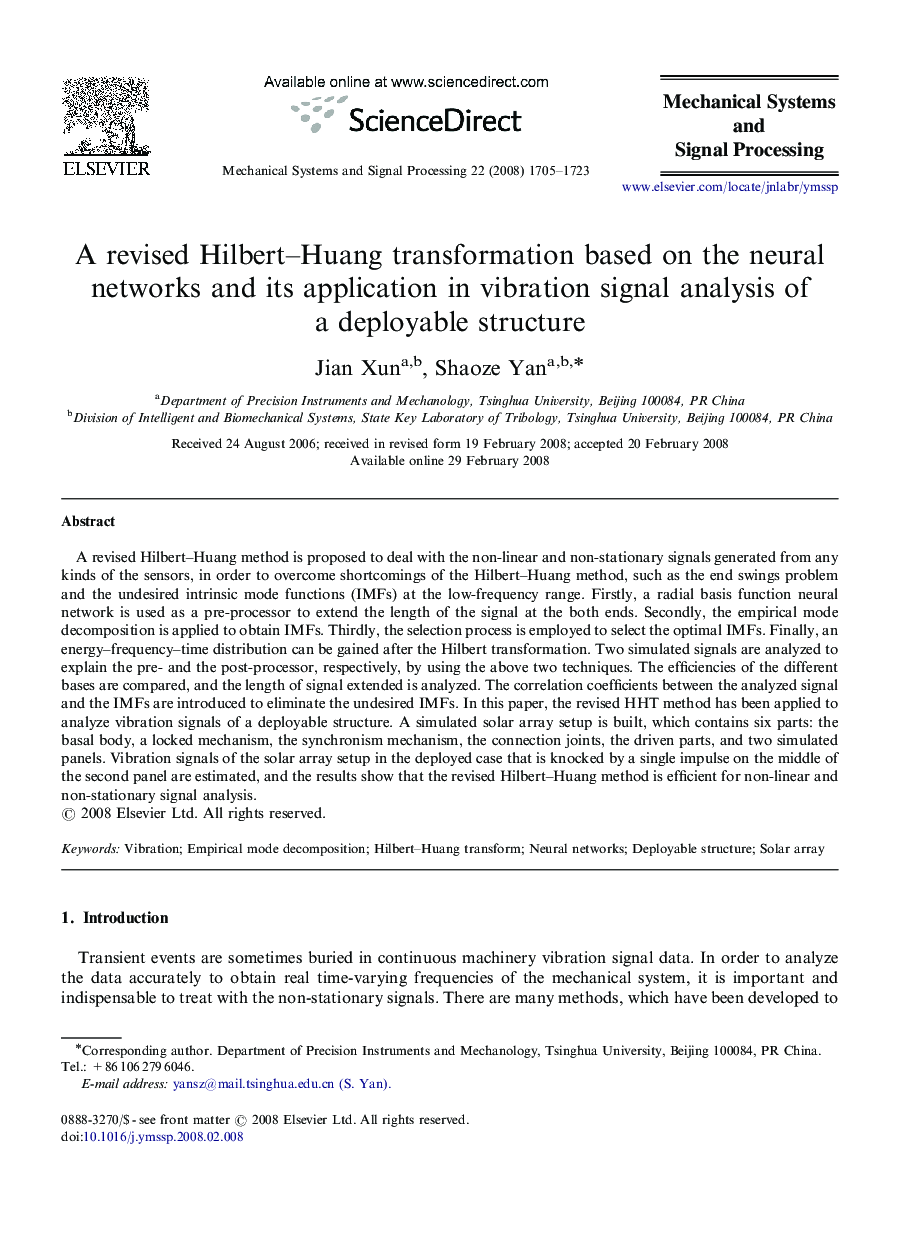| کد مقاله | کد نشریه | سال انتشار | مقاله انگلیسی | نسخه تمام متن |
|---|---|---|---|---|
| 562061 | 875353 | 2008 | 19 صفحه PDF | دانلود رایگان |

A revised Hilbert–Huang method is proposed to deal with the non-linear and non-stationary signals generated from any kinds of the sensors, in order to overcome shortcomings of the Hilbert–Huang method, such as the end swings problem and the undesired intrinsic mode functions (IMFs) at the low-frequency range. Firstly, a radial basis function neural network is used as a pre-processor to extend the length of the signal at the both ends. Secondly, the empirical mode decomposition is applied to obtain IMFs. Thirdly, the selection process is employed to select the optimal IMFs. Finally, an energy–frequency–time distribution can be gained after the Hilbert transformation. Two simulated signals are analyzed to explain the pre- and the post-processor, respectively, by using the above two techniques. The efficiencies of the different bases are compared, and the length of signal extended is analyzed. The correlation coefficients between the analyzed signal and the IMFs are introduced to eliminate the undesired IMFs. In this paper, the revised HHT method has been applied to analyze vibration signals of a deployable structure. A simulated solar array setup is built, which contains six parts: the basal body, a locked mechanism, the synchronism mechanism, the connection joints, the driven parts, and two simulated panels. Vibration signals of the solar array setup in the deployed case that is knocked by a single impulse on the middle of the second panel are estimated, and the results show that the revised Hilbert–Huang method is efficient for non-linear and non-stationary signal analysis.
Journal: Mechanical Systems and Signal Processing - Volume 22, Issue 7, October 2008, Pages 1705–1723